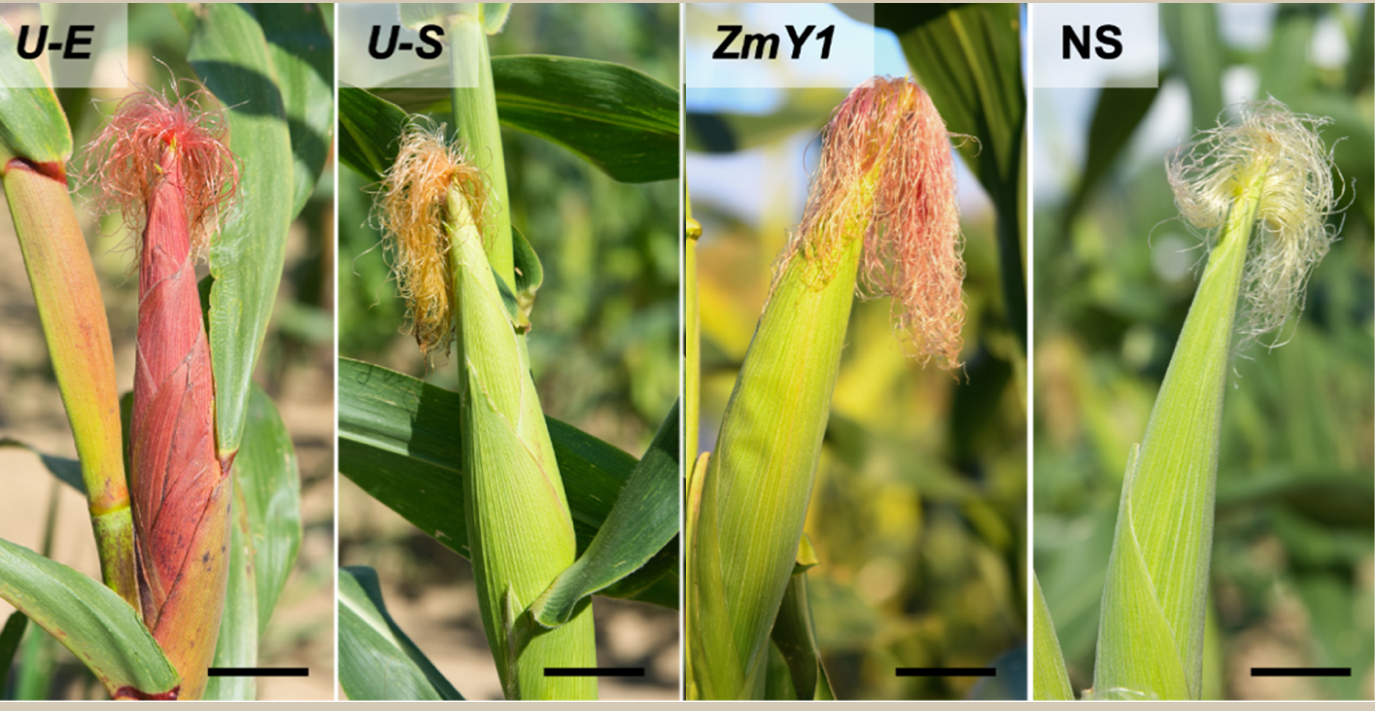
Researchers Find Corn Lines with High Flavonoid Content Could Kill Major Crop Pest
February 26, 2025| |
A team of researchers at Pennsylvania State University (Penn State) reveals that genetic lines of corn have inherent compounds called flavonoids that serve as insecticides, protecting them from the corn earworms that feed on them.
Corn earworm causes losses of more than 76 million bushels of corn in the United States annually. Increasing extreme weather events and temperatures will exacerbate the damage done to agricultural output by insect pests, according to previously conducted studies. In findings published in the March issue of Plant Stress, the researchers reported that corn earworm larvae feeding on the silks, husks, and kernels of corn lines with high levels of flavonoids — chemicals that play essential roles in many biological processes and responses to environmental factors in plants — grow much more slowly and many die, compared to larva feeding on corn lines without flavonoids.
The researchers found that larvae feeding on high-flavonoid corn lines experienced increased mortality and reduced body weight and developed symptoms similar to a leaky gut syndrome. This suggests that changes in the microbiome of the larval gut may be involved. To conduct their study, the researchers compared corn earworm larvae fed genetically identical corn strains, differing only in specific, known attributes. Some strains expressed high flavonoid content in their silks, husks, and kernels, while others did not. The corn used in the experiment included a line engineered to have a gene that triggers flavonoid production and a line that was conventionally bred to produce flavonoids.
Researchers observed a significant difference in mortality rates and body weight among corn earworm larvae that fed on flavonoid-overproducing plant lines compared to those that fed on control lines. Both the genetically engineered line and the line derived from the mutant exhibited similar effects on the larvae.
For more details, read the article in Penn State News.
| |
You might also like:
- Researchers Reveal Novel Genetic Basis of Pest Resistance to Biotech Crops
- CSIRO Decodes Genome of Megapests
- Cry1Ie Confers Resistance to Corn Earworm in Maize
Biotech Updates is a weekly newsletter of ISAAA, a not-for-profit organization. It is distributed for free to over 22,000 subscribers worldwide to inform them about the key developments in biosciences, especially in biotechnology. Your support will help us in our mission to feed the world with knowledge. You can help by donating as little as $10.
-
See more articles:
-
Plant
- Study Explores Impact of Bt Cottonseed Cake on Growth and Health of Rams
- Australian OGTR Receives License Application for Commercial Release of GM Cotton
- Rubber Growers Call for GM Rubber Approval to Address Price Slump and Pest Attacks
- Genetic Engineering Improves Salt Tolerance in Wheat
- Webinar on Regulatory Frameworks for New Breeding Techniques in Crops
- Study Reveals Consumer Acceptance of Gene-Edited Food
- Researchers Find Corn Lines with High Flavonoid Content Could Kill Major Crop Pest
-
Environment
- Scientists Decode the Genome of White Oak
-
Read the latest: - Biotech Updates (November 26, 2025)
- Gene Editing Supplement (November 26, 2025)
- Gene Drive Supplement (February 22, 2023)
-
Subscribe to BU: - Share
- Tweet

